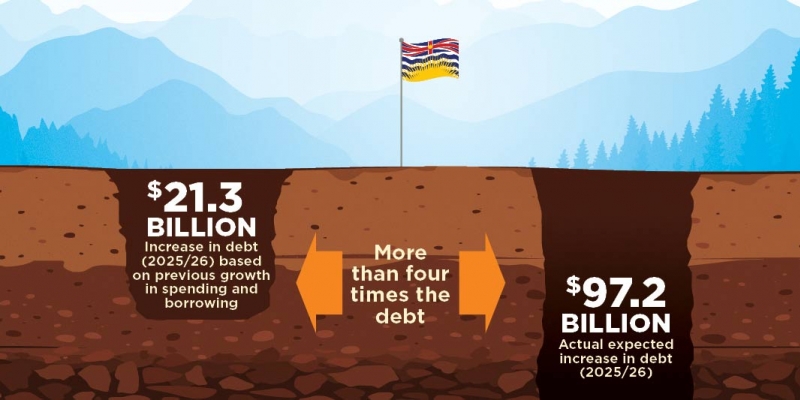Spending Growth Is the Cause of BC’s Coming Debt Boom
— Published on August 10, 2023

Summary
- In early 2023, the Fraser Institute analyzed recent fiscal policy changes in British Columbia. Specifically, we showed that after an extended period of spending restraint between 2000 and 2017, BC’s approach to government spending shifted markedly and the rate of spending growth increased dramatically.
- This bulletin updates that analysis to assess the extent to which BC’s elevated spending has persisted in the years during and following the COVID-19 recession. Further, we examine the extent to which changes in the government’s approach to public spending have influenced fiscal outcomes in the province.
- We find the shift in the government’s approach to public spending has been ongoing and durable. Following the 2000 to 2017 spending restraint years during which real per-person spending growth increased at a compound annual growth rate of 0.5 percent annually, a new fiscal era began in 2017. Since then, real per-person spending has increased at a compound annual growth rate of 4.7 percent.
- The change in the government’s approach to public expenditures has profound implications for the province’s fiscal outlook. The provincial debt-to-GDP ratio is currently forecasted to reach 22.5 percent of GDP by 2025/26. If the government had maintained the spending growth rate from the restraint era, this ratio would be trending down instead of up and would have reached 4.9 percent of GDP that year.
- The change in the government’s approach to spending appears to be enduring. Higher spending growth has transformed the trajectory of the province’s finances; the planned increase in debt in the coming years could have been avoided had the spending restraints continued following the change in government in 2017.
Authors:
More from this study
Subscribe to the Fraser Institute
Get the latest news from the Fraser Institute on the latest research studies, news and events.



